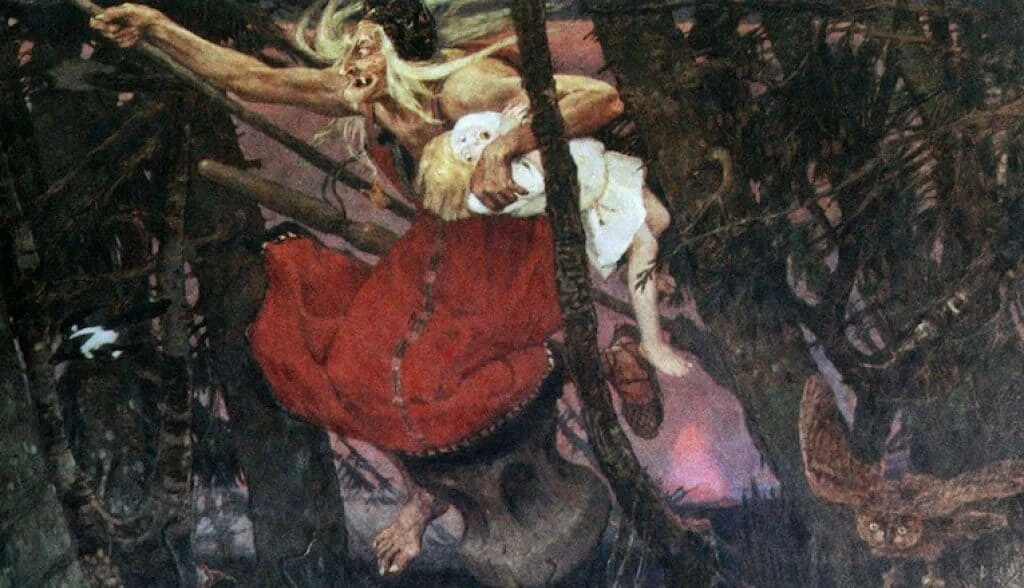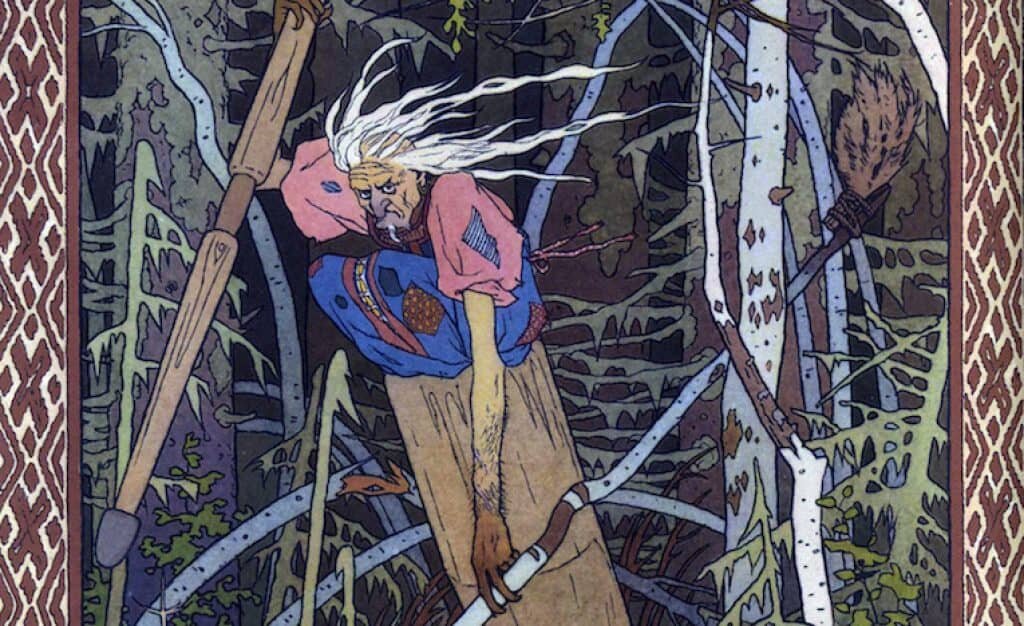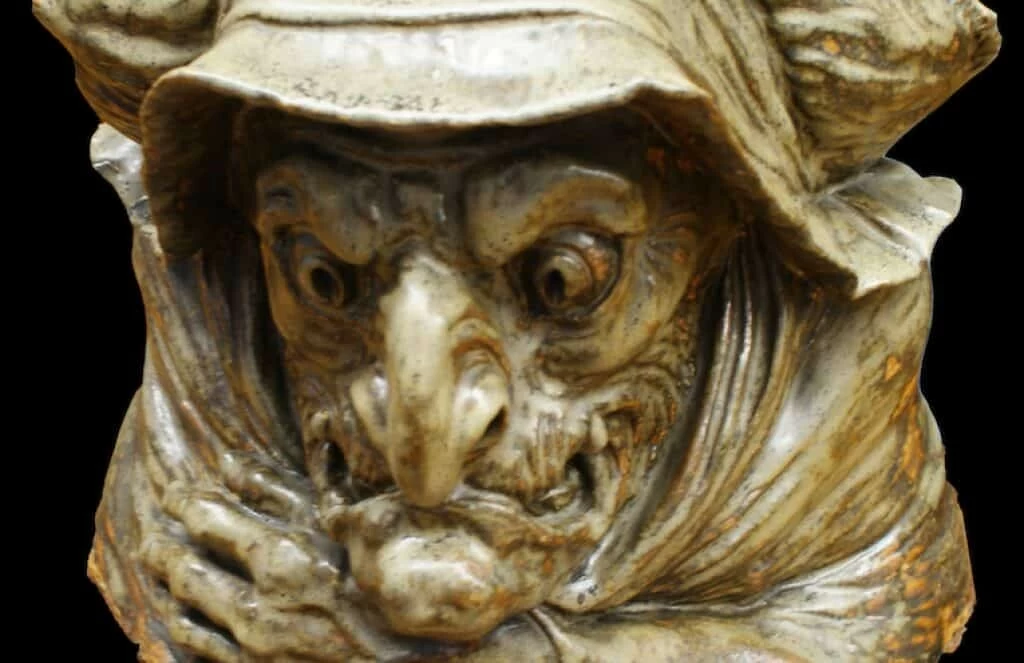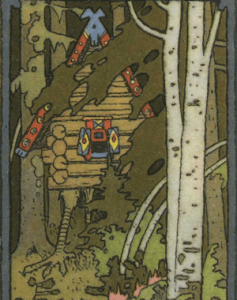Baba Yaga is one of the most famous, yet confusing, witches in Slavic folklore and children’s fairy tales. If you run into her, you can’t be sure whether she will eat you or speak tenderly to you and grant you your wishes. The legend of Baba Yaga probably arose when the religions of Europe contained a pantheon of gods and creatures, both of which controlled the forces of nature and the destiny of man. No one knows for sure when or where her story originated, however, it appears that she has been a part of oral tradition in Northeastern Europe and Russia for millennia.

What Does Baba Yaga Mean?
The first written reference to her was in 1755 in Mikhail W. Lomonosov’s Russian Grammar. Baba has been translated as old woman, hag, or grandmother, depending on which Slavic language is being referenced. Yaga or Iaga has no definitive scholarly consensus. The word means horror and shudder in Serbian and Croatian, anger in Slovenian, witch in old Czech, wicked wood nymph in Modern Czech, witch and fury in Polish, and serpent or snake in Sanskrit.
What Does the Slavic Witch Look Like?
The Russian witch is described as a deformed, scraggly old woman with bony legs, a very long crooked nose, piercing cold eyes, and iron teeth. Every single body part, including her eyes, ears, feet, hands, and mouth are grotesque and deformed. With a demeanor that is powerful and highly tempestuous, she instills fear and guarded respect in everyone that encounters her.
House of Baba Yaga
The Russian Baba witch lives deep in the dark forest. She owns a hut that’s more like an animal than a house. It has skinny chicken legs that can run through the forest to avoid anyone looking for the witch. The bright windows are its eyes that keep a lookout for intruders, and the fence posts around her hut are made from old human bones. Atop each fence post sits a human skull to scare away those who come near. When her house moves, it spins and screeches to a halt and settles down into place with loud groans and creaks. When a visitor arrives, the shy house turns it back.
Folklore of Baba Yaga
There are various versions of the Baba Yaga witch story. Some say that she is either a single witch or a trio of witches who all share the same name. Most stories tell us that she rides around the forest in a giant mortar and uses a pestle to grind up the bones of the people she eats. When flying, she holds the pestle in her right hand and a broom in her left. The pestle also works like a rudder that steers the mortar as she flies around. The broom wipes away all of her trails so that no one can find her. In other versions of the tale, she flies around on a traditional witch broom. Baba Yaga has a frightening ability to remove her hands from her body so she can have them do her bidding.
The Malleus Maleficarum Witch Hunters’ Handbook
The Slavic witch has the power to help or hurt anyone who crosses her path. Those who seek her wisdom, truth, and knowledge must first complete several tasks. Only upon completion of the tasks will she provide help. If the tasks are not fulfilled and the seekers have not found a way to escape, she will cook and eat them.

Similarities to the Famous German Fairytale
One version of the tale closely resembles the story of Hansel and Gretel. Two children enter Baba Yaga’s hut and she gives them impossible tasks to complete. If they do not fulfill the tasks, she will put them in the oven and cook them for dinner. They are able to escape with the help of some talking forest creatures, a tree, and a gate. Another story tells of a young girl, Vasilisa the Beautiful, who seeks Baba Yaga’s help to find some firelight. After Vasilisa completes several tough chores, Baba gives her a fire in a skull lantern and lets Vasilisa return home.

Baba Yaga is a mysterious and rather confusing character. She possesses many contradictory qualities, and although she is quite ruthless and vile, she is also beneficent and kind. Baba is omniscient – she knows all things – and will reveal anything if the person is worthy. The kindhearted, noble, virtuous, and heroic people that come in contact with her receive gifts. Like Mother Nature, she also controls the elements, such as the weather, and can be quite motherly at times.
Celtic Goddess Brigid and Her Enduring Deity
The Baba Yaga story and poems are in many children’s books today. The moral of her story seems to be that anyone who possesses a loving and honorable heart can overcome even the worst evil. Surely, any story that can teach that to our children should endure.
Resources:
Famous Witches
Witches in Slavic Mythology
Myths
Folk Tales from the Russian, 1903
The Confounding Crone of Slavic Folklore
